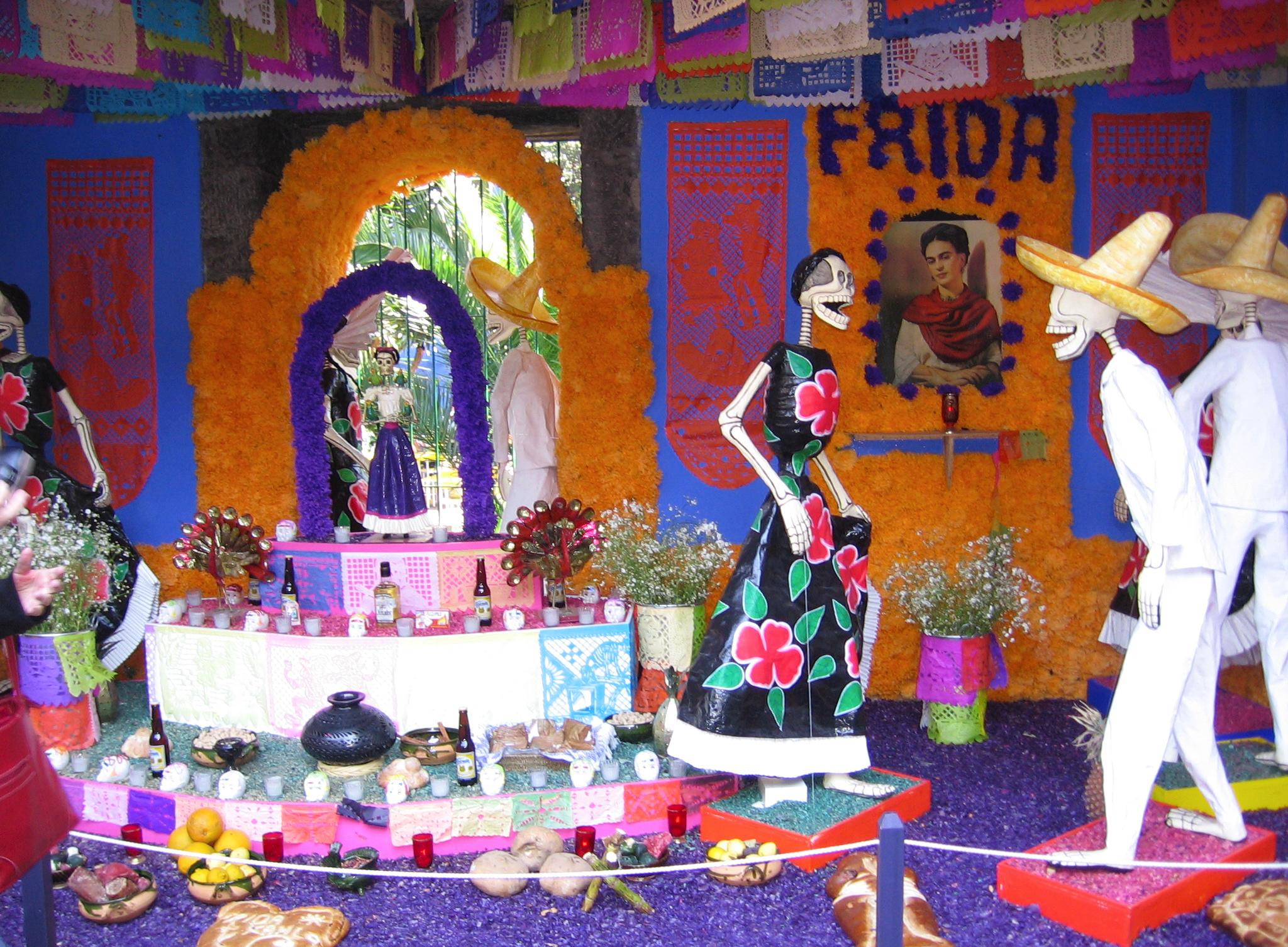A carved jack-o’-lantern perched outside her house, while sugar skulls adorned an altar on the other side of the door.
Growing up as a Mexican American in East Los Angeles, this is how third-year world arts and cultures student Ciani Nunez-Murillo remembers balancing two celebrations at a time ““ Halloween and DÃa de los Muertos.
Preparations for DÃa de los Muertos ““ a Mexican holiday celebrating the dead ““ always started the week before Nov. 2, since her family had to buy special bread and materials for the altar to the dead, Nunez-Murillo said.
That competed with the decision of what to be for Halloween, the American holiday that fell a few days earlier.
Nunez-Murillo’s Halloween meant a community celebration in the park. The next day, it was on to building an altar for DÃa de los Muertos.
On Nov. 2, family and friends gathered at a different house every year to share stories and celebrate loved ones who had died, Nunez-Murillo said. They listened to traditional ghost tales from grandparents who grew up hearing the same folklore in Mexico.
Both Halloween and DÃa de los Muertos are a combination of cultural traditions, Western Christian celebrations and the evolving identities of the group celebrating, said Joseph Nagy, an English, folklore and Celtic studies professor.
Halloween has morphed into a wholly American tradition but originates partly from the tradition of celebrating on the eve of All Saints’ Day on Nov. 1.
DÃa de los Muertos, meanwhile, combines pre-Columbian traditions of honoring the dead during harvest time with the Western Christian holidays of All Saints’ Day and All Souls’ Day.
A different generation
Virginia Espino grew up as a Mexican American in Los Angeles. But she said celebrating her cultural traditions was taboo.
“I was part of the generation where they felt like you should shed your Mexicanness to be successful in the American school system,” said Espino, a series leader of Latina and Latino History at the UCLA Center for Oral History Research.
So Espino didn’t learn Spanish at home, and she dressed up for Halloween instead of celebrating DÃa de los Muertos.
She first encountered DÃa de los Muertos in the 1980s when she studied in Mexico for a year as an undergraduate student. Espino remembers the first time she saw the festivities at a cemetery, as smells collided with colors to create a celebratory sensation.
“It was religious, spiritual, colorful ““ demystifying what a cemetery is. You think of it as a place to mourn and be sad, but people were eating and enjoying all kinds of food,” she said. “It was mind-blowing.”
Today, children growing up in Mexico also balance Halloween and DÃa de los Muertos, Espino said. She realized this when she returned to Mexico City from 2005 to 2007.
Espino was surprised to see children parading past her home on Halloween, some armed with Dracula costumes and others donning Harry Potter capes.
Instead of “trick or treat,” though, choruses of “Quiero mi Halloween” ““ Spanish for “I want my Halloween” ““ greeted Espino when she opened the door in the Mexico City suburb.
“Hundreds of kids would come through our neighborhood. … The first time, we ran out of candy,” Espino said.
Now, Espino’s kids are like Nunez-Murillo ““ they grew up celebrating both. For her daughter’s birthday over the weekend, Espino had a Halloween- and DÃa de los Muertos-themed party.
At her children’s school in Pasadena, Espino helped build an altar that all the students gathered at to honor the ones they had lost, sharing stories and pictures of people they loved, including pets.
Combining cultures
Espino has a DÃa de los Muertos altar at home with painted calaveras, or skulls, and marigolds that brighten the house, but she observes the holiday differently then her Mexican counterparts.
She and her family used to visit cemeteries on DÃa de los Muertos when they lived in Mexico, but they didn’t have anyone buried there.
“I celebrated more as a tourist than as someone celebrating a loved one who has passed,” Espino said.
In the past five years or so, there has been a similar increase in DÃa de los Muertos community events in Los Angeles, Nunez-Murillo said.
She’s noticed more events focusing on the Mexican traditions, like the celebration at Hollywood Forever Cemetery on Oct. 22.
“It’s not that anyone’s visiting anyone, it’s just the idea that it’s the same as in Mexico,” Nunez-Murillo said.
Nunez-Murillo and her family confine their celebrations to gatherings in homes, she said, instead of going to a cemetery to celebrate at the graves of the dead and then coming home for an intimate celebration, like her grandparents had done in Mexico.
Los Angeles also has more second-generation Mexican Americans who continue to transform cultural traditions associated with DÃa de los Muertos, like the artwork, Nunez-Murillo said.
“(Los Angeles) DÃa de los Muertos artwork is taking traditional Mexican artwork and giving it a twist, whether it’s a modern twist or a political twist,” Nunez-Murillo said. “The meaning behind (the art) is the same, but it’s gone about differently.”
As the artistic director for Grupo Folklorico, a group on campus that performs traditional Mexican dances, Nunez-Murillo continues to adapt the celebration as she helps bring it to campus.
In a Hill event today, the group will perform as an offering to the souls that have passed. They will also have an open altar for students to give offerings of trinkets and photos of loved ones or make paper flowers laden with memories and names to place on the altar.
“One of the ideas (of DÃa de los Muertos) is that death only comes when you forget about the person who passed on,” Espino said. “So you use this day to remember with pictures and food and music and sharing.”
